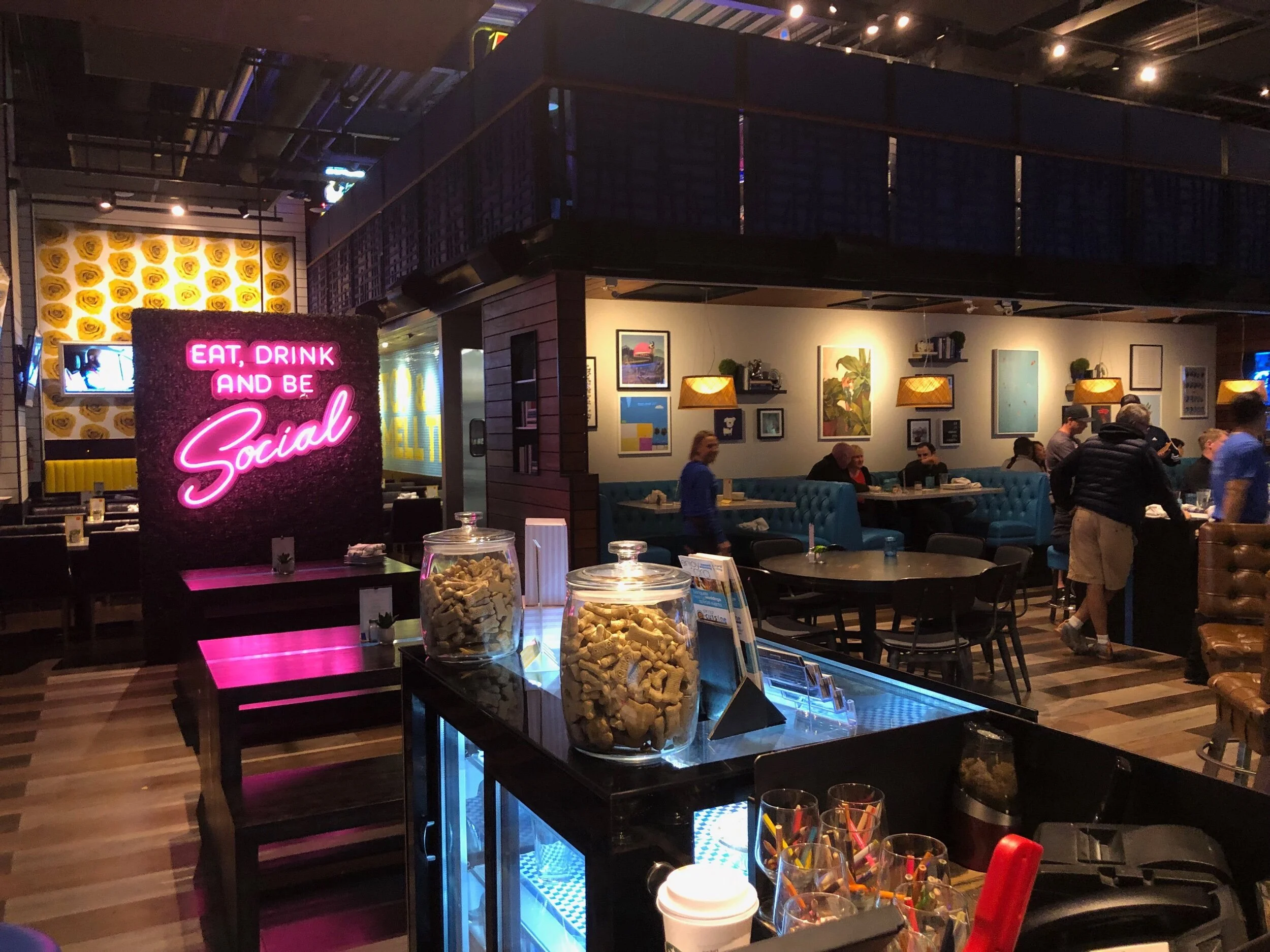
THE MORE YOU KNOW
THE BETTER YOU NEGOTIATE
Getting Above Standard Tenant Improvements
Do you want great space that helps define your business and attract new clients? Is your company culture important to hiring and retaining top talent? If any of these statements resonate with you, then you cannot afford to accept standardized tenant improvements.
Above standard tenant improvements are typically any material used to improve your space that is above the common finishes the building owner utilizes . Usually the building owner has a list or book of all standard paint carpet, lighting and other flooring finishes that they are willing to provide to improve their space with. These may not showcase your businesses image, align with your company culture, or provide current/potential clients an idea of the caliber of your services. Many architectural firms, law firms and technology companies (just to name a few) need their space to make an impression on everyone who walks through their front doors. An architect uses their lobby to speak to their design capabilities, lawyers use this & other meeting areas to set the tone for their prowess and other businesses use their interior common areas to reinforce their brand & company values.
Achieving a certain look and feel beyond what a landlord is offering typically comes at an additional cost of construction. For example: building out 5,000 sf with building standard finishes may run $60/sf ($300,000); however, your company may want to add design elements to part or all of your space that will increase that number to $85/sf ($425,000). The $125,000 delta between these two numbers can be covered in the following ways.
Tenant pays for the difference: now most tenant rep brokers hate this as it isn’t ideal for companies without a large war chest. It consumes the tenant’s capital upfront and can typically be used better by the tenant to grow their business. In the event the tenant outgrows their space ahead of the natural lease expiration, they’ve sunk capital improving a space they didn’t use for the duration of their lease.
Landlord amortization of the difference: this is the most common solution to a tenant improvement overage. The landlord factors the additional cost of the tenant improvements into the tenant’s rent over time. This keeps the tenant from paying for the improvements upfront but does raise their monthly/annual rent obligation. This can be accomplished as a $/psf rent increase or an annual percentage increase. Think of it as a loan on the difference from the landlord. Does the landlord make a return on this loan...of course. Does the tenant lose if they outgrow the space ahead of the lease expiration? Yes, but not as much as if they pay out of pocket for the improvement difference up front.
Covering the difference through a loss in concessions: this is by far the most complicated and situation specific solution. If you have a savvy tenant representative, who knows your improvement costs will overrun a standard market landlord contribution; they will negotiate a robust rent abatement package, then reduce that once the improvement costs are known so that your rent cost/sf doesn’t increase dramatically. The drawback here is that most businesses use the rent abatement period to offset moving, furniture and other soft costs associated with new space. If those costs are minimal, this may be the best option for a business needing above standard tenant improvements.
*Value Engineering: while not always strategy for covering the cost difference in negotiations, having a great project manager or construction team working with your business & tenant representative to cut construction costs after you’ve secured a certain $/sf in landlord supplied improvement funds can be to your benefit. Make sure your tenant representative negotiated a clause which allows your business to utilize any unused funds in the form of full or partial rent payments.
If you need any help finding or negotiating on space, call us. We’re here to help. #findYOURspace
Avoiding Percentage Rent
If you’re an office tenant skip this one, it thankfully doesn’t apply to you - restaurant and retail space users should take notes. Your landlord is like that disgusting troll under the bridge in the story your mom used to read you. They want more than what’s fair because they think they’re in control. You’re about to pay them a monthly amount of rent, and your share of property taxes, property insurance and common area maintenance, in order to operate your business in their property. In addition, or sometimes in lieu of, they want their grubby little hands in your pocket by charging you a percentage of your (typically) gross sales...sometimes above a breakpoint but sometimes from the first dollar you earn. This is called percentage rent, and it’s absurdly legal.
As a rule of thumb your restaurant or retail store should never lease space that costs more than 6 - 10% of your projected gross sales. Seriously. Landlords who believe you have the ability to make millions of dollars in annual revenue in their space will try to parasitically attach themselves to your success using an overage percentage (DM me for details) or an absolute gross sales breakpoint on top of your rent. Whatever you sell above this breakpoint gets multiplied by your percentage and goes to the landlord. Seriously. Avoiding this is tough, but not impossible. First, know the conversation needs to be had upfront in lease negotiations and either make the percentage based on sales of something specific: i.e.: food sales, alcohol sales, super high end product you sell few of; or make your breakpoint so high you are UNLIKELY to hit it. Second, make the percentage a low number. Landlords are going to try something between 5 - 7% but it’s okay to laugh at them and offer 2 - 3%. Do not be afraid to walk away from the negotiating table in order to do this. Far too many restaurant owners fall in love with space and just agree to this nonsense. Unless you’re Tiffany’s you should stay far away from leases like these without protecting yourself, and if you need help, call us!
Jamal Brown has represented commercial tenants in lease negotiations for over 16 years.
Not All Buildings Are Created Equal
All commercial buildings are not created equal. One of the most overlooked aspects of a building’s value to the tenant is the efficiency of that particular building when compared to another. This efficiency is in relation to the ratio of the space the tenant actually leases within their four walls (the usable square footage) and the amount of space attributed to all common areas of the building including the lobby, hallways, restrooms, common conference rooms, common kitchen areas, interior break areas, work out buildings, showers/lockers, phone and electrical rooms, and any other common use area that, when added to the usable square footage, makes up the rentable square footage. This ratio is called the building “core factor” (also referred to as “load factor”, “loss factor”, or “add-on factor”). Understanding core factors translates directly to the bottom line. Since building costs are typically near the top of the expense list, the savings can be dramatic in comparison to other expenses. Pay attention to the core factor.






